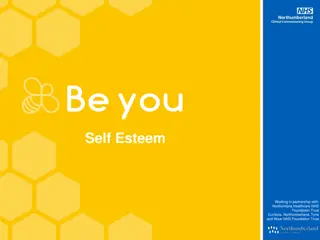Development of Self-Crosslinking Acrylics in Interpolymer Company
This presentation explores the development of a family of water-based acrylics based on a unique self-crosslinking mechanism by Mr. Dana Charron in October 2018. It covers the history of interpolymer acrylic development, self-crosslinking theory, monomers used, backbone formation, and the mechanism of self-crosslinking acrylics. The aim is to create a product with ease of use, health and safety benefits, improved economics of coating, and properties similar to traditional post-addition crosslinkers. The developmental model focuses on unique mechanisms adding value to the product line.
Download Presentation

Please find below an Image/Link to download the presentation.
The content on the website is provided AS IS for your information and personal use only. It may not be sold, licensed, or shared on other websites without obtaining consent from the author.If you encounter any issues during the download, it is possible that the publisher has removed the file from their server.
You are allowed to download the files provided on this website for personal or commercial use, subject to the condition that they are used lawfully. All files are the property of their respective owners.
The content on the website is provided AS IS for your information and personal use only. It may not be sold, licensed, or shared on other websites without obtaining consent from the author.
E N D
Presentation Transcript
A Family of Waterbased Acrylics based on a Unique Self-Crosslinking Mechanism Mr. Dana Charron PNWSCT October 2018
Overview of the Presentation History of Interpolymer Acrylic Development Self-Crosslinking Theory, Monomers, Backbone & Mechanism Film Formation Overview Acrylics & Starting Point Formulation Details Application Information Physical Testing Results Summary Thank You & Questions 2 Interpolymer A company of Zschimmer & Schwarz
Timeline of Acrylic Development at Interpolymer 2010 s 2000 s Self-Crosslinking Acrylics Bimodal Acrylics 1990 s Cationic Acrylics 1980 s Olefin Grafted Acrylics 1960 s Styrenated Acrylics 3 Interpolymer A company of Zschimmer & Schwarz
Developmental Model for the Self-Crosslinking Acrylic Development Theory (what potential product should have) Ease of use (1K instead of 2K system potential). Health and Safety benefits. Improved economics of coating. Properties need to be similar to traditional post-addition crosslinkers. Development Target (what Interpolymer wants beyond Theory) Crosslinking needs to react at room temperature. Stability profile needs to be same as traditional acrylic technology. Robust enough to be usable in multiple technologies & markets. Needs to be Unique mechanism that adds value to our product line. 4 Interpolymer A company of Zschimmer & Schwarz
Monomers used in Self-Crosslinking Acrylics X Y MAA STY BA MMA MAA = Methacrylic Acid Monomer, H2C=C(CH3)-COOH X = Schiff Monomer blend, H2C=CH-R-Z & H2C=CH-R -Z STY = Styrene Monomer, H2C=CH-C6H5 MMA = Methyl Methacrylate Monomer, H2C=C(CH3)-CO-O-CH3 Y = Self-Condensing Monomer, H2C=CH-R -Z BA = Butyl Acrylate Monomer, H2C=CH-CO-O-CH2-CH2-CH2-CH3 5 Interpolymer A company of Zschimmer & Schwarz
Backbone Formation of Self-Crosslinking Acrylics X Y MAA STY BA MMA Acrylic Emulsion Polymerization 6 Interpolymer A company of Zschimmer & Schwarz
Mechanism of Self-Crosslinking Acrylics 1. Apply formulated polymer to substrate 2. Remove the Water & Coalescing Solvents 3. Crosslinking network develops during film formation. Aqueous Emulsion Self-Crosslinked Polymer Film 7 Interpolymer A company of Zschimmer & Schwarz
Film Formation of Waterbased Polymers MFFT = Minimum Film Formation Temperature Temperature Film formation No film formation Factors that Influence the Film Formation: - Backbone configuration and composition - Atmospheric conditions - Ingredients of the formula - Substrate porosity and composition Particle deformation and alignment Film formation T C >MFFT Water evaporation Polymer film Deformed particles Aqueous emulsion Closest particle packing 8 Interpolymer A company of Zschimmer & Schwarz
Information on Acrylics used in this Presentation Code SX Tg 5 Tg 5 % NV 42% 42% Calc. Tg 5 C (41 F) 5 C (41 F) Actual MFFT 15 C (59 F) 10 C (50 F) X/Y Ratio % X+Y of Polymer 55/45 - 4.5% - SX Tg 35 Tg 35 42% 42% 35 C (95 F) 35 C (95 F) 45 C (113 F) 40 C (104 F) 55/45 - 5.2% - SX Tg 65 Tg 65 40% 40% 65 C (149 F) 65 C (149 F) 75 C (167 F) 68 C (155 F) 64/36 - 4.0% - Note: all of the above acrylic backbones are the same, ratio s adjusted to hit targeted Tg. X & Y levels chosen to optimize Tg and physical property targets. 9 Interpolymer A company of Zschimmer & Schwarz
Information on Application Formulas* used in this Presentation Ingredients Water Plasticizer Coalescing Solvent Leveler Acrylic Resin Tg 5 Polymers 27.60% - - 0.90% 71.50% Tg 35 Polymers 28.99% 2.89% 2.71% 0.90% 64.51% Tg 65 Polymers 29.22% 5.67% 3.24% 0.90% 60.97% Total Solids pH Viscosity VOC Content 30% 7-9 < 100 cps < 10 g/L 30% 7-9 < 100 cps 79.5 g/L 30% 7-9 < 100 cps 94.3 g/L Note: all of the above formulas were designed for room temperature film formation. * This slide does not include the white paint formula based on Tg 5 polymers used in some examples. 10 Interpolymer A company of Zschimmer & Schwarz
Information on Application Data used in this Presentation This Evaluation took place over a 10 month period (February 2016 December 2016). The purpose was to evaluate our Self-Crosslinking Mechanism over multiple substrates targeting multiple markets. 14 Substrate types used during evaluation (Concrete, Oak, Maple, Pine, Poplar, Red & Grey Quarry Tiles, PVC, VCT, Glass, Steel, Aluminum and Coated & non-Coated Leneta Cards) 6 Markets were targeted during evaluation (Flooring, Furniture, OPV for Labels, OPV for non- FDA Packaging, Paints and Kitchen Cabinets). All evaluations were repeated by the multiple members of Interpolymer s Massachusetts Laboratory Staff. The following is only the highlights of all the data & photographs recorded during the Self- Crosslinking Acrylic Study. 11 Interpolymer A company of Zschimmer & Schwarz
Physical Testing - Bench Testing Results Tg 5 SX Tg 5 Tg 35 SX Tg 35 Tg 65 SX Tg 65 60 Gloss 86 71 76 88 72 78 84 73 65 86 74 80 84 74 67 85 74 75 (3 wet mils, N2C Gloss Card) (3 wet mils, Oak) (3 wet mils, concrete) Recoatablity (ASTM D 3153) Excellent Excellent Excellent Excellent Excellent Excellent Sward Hardness (ASTM D 2134) 18 24 28 30 30 34 Pencil Hardness (ASTM D 3363) 3B 2B 2B HB B F Wear Index (ASTM D 4060) 48 46 60 62 64 65 Note: Pencil Hardness Scale (softer to harder): 6B-5B-4B-3B-2B-B-HB-F-H-2H-3H-4H-5H-6H Wear Index based on 1000 cycles using CX-17 wheels with 500 g weight 12 Interpolymer A company of Zschimmer & Schwarz
Physical Testing Chemical Spot (ASTM D 1308) Testing Results Tg 5 SX Tg 5 Tg 35 SX Tg 35 Tg 65 SX Tg 65 Rubbing Alcohol 4 1 2 0 5 1 100% Ethanol 4 1 5 0 5 1 Skydrol Fluid 5 5 5 4 4 0 Mustard 3 0 1 0 1 0 Red Wine 1 0 0 0 2 0 Betadine 4 3 3 0 4 3 Note: Chemical resistance is reported subjectively on a scale from 0 to 5 where 0 indicates no change to the film and 5 indicates complete film removal. 13 Interpolymer A company of Zschimmer & Schwarz
Physical Testing Water Submersion Test (Internal Method) Tg 5 Tg 35 Tg 65 SX Tg 5 SX Tg 35 SX Tg 65 Note: Coated Red Quarry Tiles dried at room temp for 4 hours, then submerged in water for 1 week. 14 Interpolymer A company of Zschimmer & Schwarz
Physical Testing Stain Resistance Test (ASTM D-1308) Tg 5 Tg 35 Tg 65 SX Tg 5 SX Tg 35 SX Tg 65 Mustard (Clear over Oak) Betadine (Clear over VCT Tile) Skydrol Fluid (Clear over Concrete) 15 Interpolymer A company of Zschimmer & Schwarz
Physical Testing Alcohol Resistance Test (AATCC, ASTM, KCMA) Tg 5 Tg 35 Tg 65 SX Tg 5 SX Tg 35 SX Tg 65 Alcohol Rubs (Paint over PVC) Hand Sanitizer Gel (Clear over Concrete) 100 Proof Alcohol (Clear over Oak) 16 Interpolymer A company of Zschimmer & Schwarz
Physical Testing Alkali Submerged Test (Internal Method) Tg 5 Tg 35 Tg 65 SX Tg 5 SX Tg 35 SX Tg 65 Note: Coated glass panel dried at room temp for 48 hours, then submerged in 2.5% Sodium Hydroxide Solution for 1 hour at 80 C . 17 Interpolymer A company of Zschimmer & Schwarz
Physical Testing Hot Tire Resistance Test (Internal Method) Tg 5 Tg 35 Tg 65 SX Tg 5 SX Tg 35 SX Tg 65 Note: Coated panel dried at room temp for 48 hours, then 60 C tire strip pressed on surface for 15 minutes at 1000 psi. 18 Interpolymer A company of Zschimmer & Schwarz
Physical Testing Adhesion Test (ASTM D-3359 & D-7234) SX Tg 5 SX Tg 35 SX Tg 65 Paint over PVC Clear over CRS Clear over Oak Clear Primer over Concrete Clear Primer over Concrete Clear Primer over Concrete Note: Concrete tested with P.A.T.T.I. Pneumatic Adhesion Pull-off Tester. 19 Interpolymer A company of Zschimmer & Schwarz
Summary of the Self-Crosslinking Presentation Developed a room temperature waterbased self-crosslinking mechanism. Self-crosslinking mechanism based on unique dual chemistries. Dual chemistries allow for ability to dial-in property improvements. Improvement on stain, chemical and water resistances over uncrosslinked acrylics (similar to expected results with post-added crosslinkers). Easy transition from standard acrylic to self-crosslinking acrylic of same Tg, due to same stability / compatibility profile and formulation requirements. Better economics & EHS profile using self-crosslinking acrylics. Like all of our Technologies (Bimodal, Wax Graft, etc), can be manufactured at any Interpolymer facility. 20 Interpolymer A company of Zschimmer & Schwarz
Acknowledgements Angelo Pedicini, Technical Director (Interpolymer USA) Lou Butenschoen, North America Sales & Marketing Manager (Interpolymer USA) Patrice Heintz, Latin America Manager (Interpolymer USA) Greg Landry, Sales Manager (Interpolymer USA) Eric Amoedo, Applications Manager (Interpolymer MA) Jessica Corwin, Development Chemist (Interpolymer MA) Tim Martin, Retired Technical Director of Interpolymer US 21 Interpolymer A company of Zschimmer & Schwarz
Thank you & Questions? www.interpolymer.com 22 Interpolymer A company of Zschimmer & Schwarz























